Travelogues
-
-
-
Yeorakjae in Gangjin for a leisurely time in a sensually designed hanok
-
08/18/2022
426
-
-
-
-
-
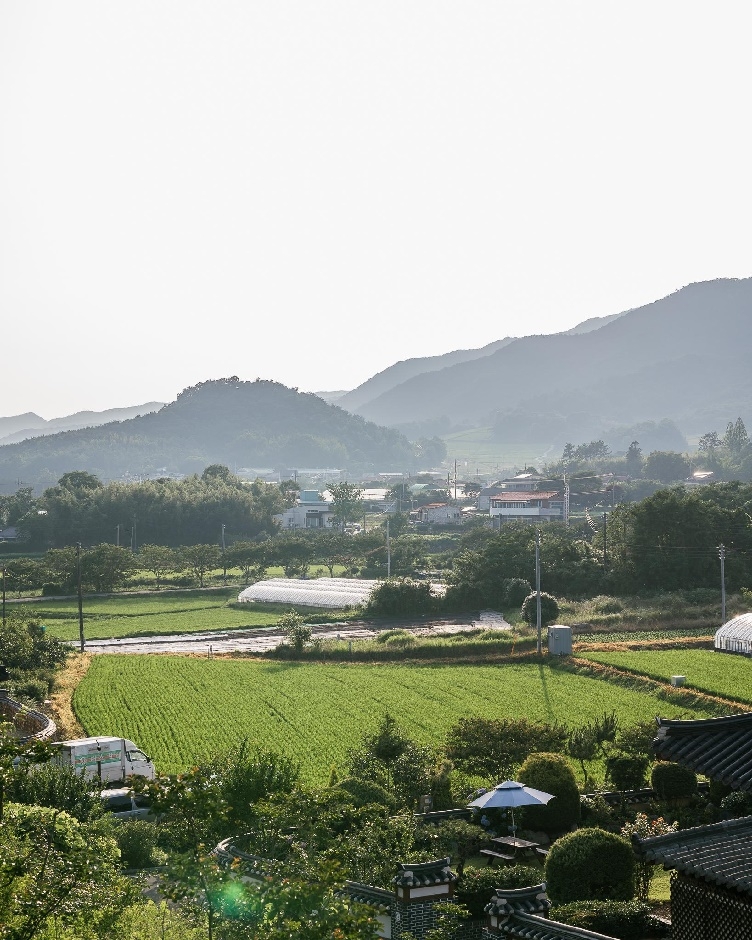
Summer is a season wherein everything is green.
Most people will recall a blue ocean when they think of a summer vacation,
but village roads filled with dense trees and greenery is not a scenery that can be enjoyed throughout the year.
That is why I searched for places to enjoy green nature,
not the ocean, for the summer vacation this year.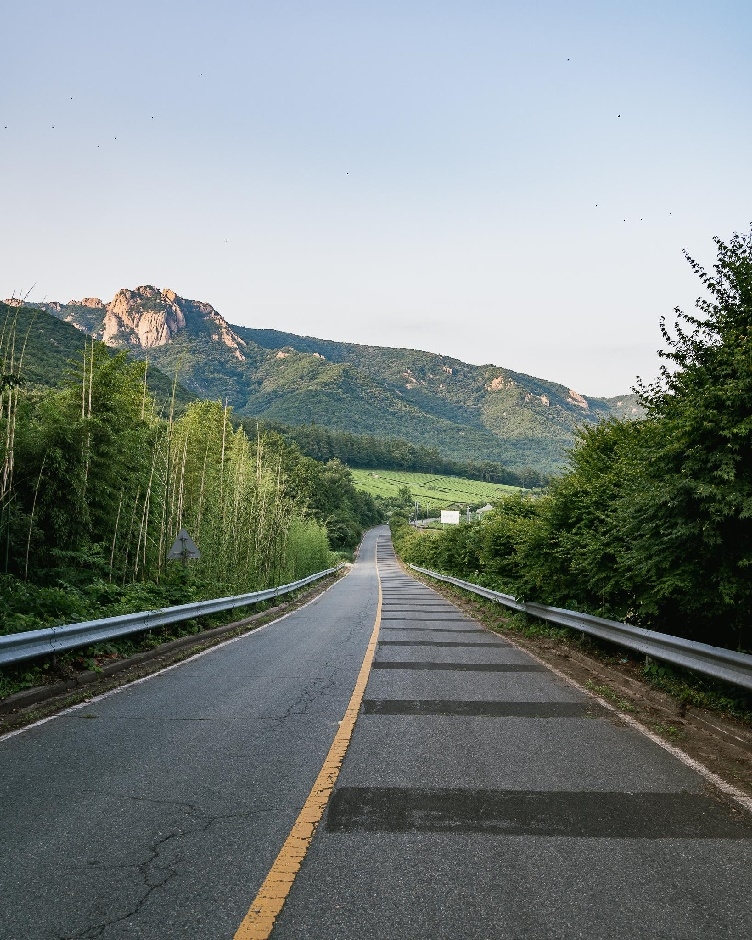
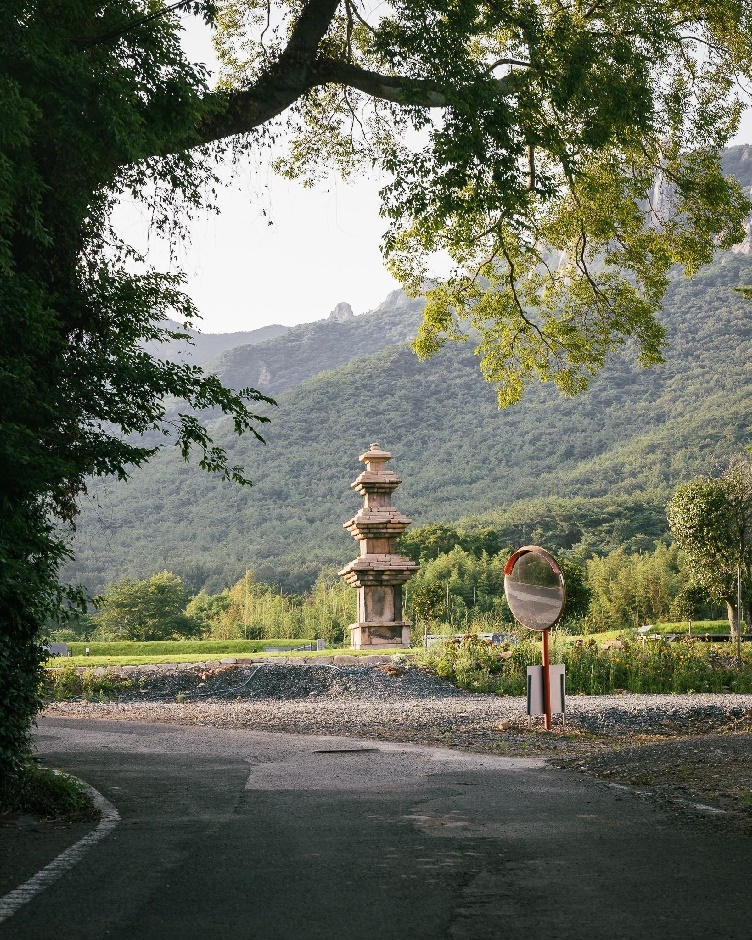
Gangjin-gun in Jeollanam-do is located at the southern end of the Korean peninsula
that tourist sites are likely to have formed around the ocean.
However, there are all kinds of well-preserved cultural assets
and green fields inland with Wolchulsan Mountain on the back,
so it offers many touris attractions to visit. While strolling in green fields,
you can readily move to the seashore if you suddenly wants to see the ocean.
Gangjin that I visited for the first time was a place to enjoy everything offered in the summer to me.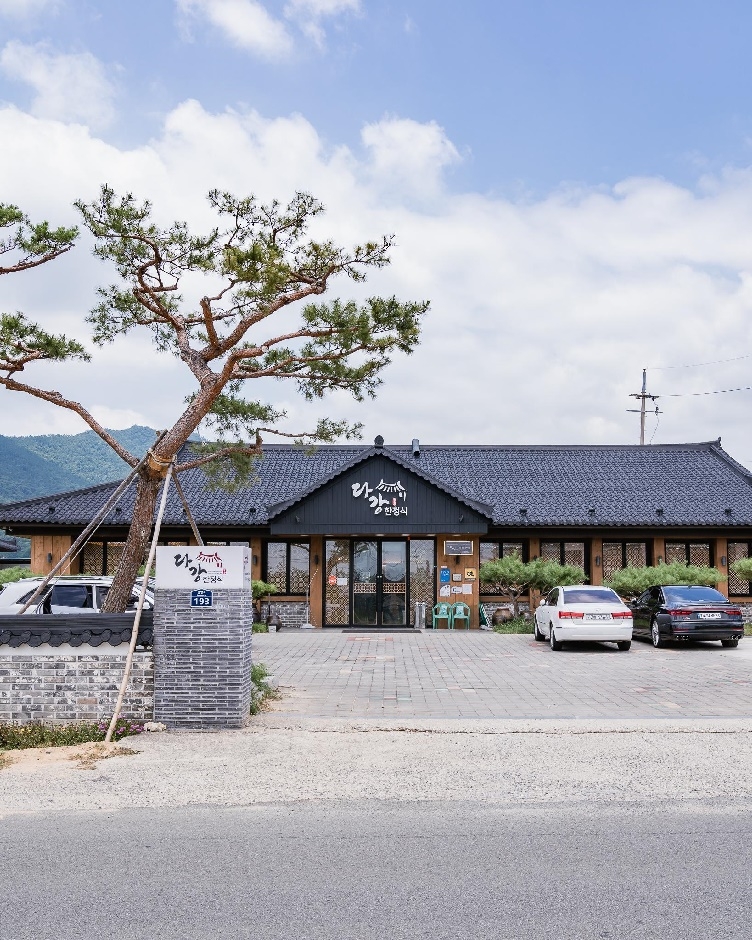
It takes rather long to drive from Seoul to Gangjin.
If you depart early in the morning, you will arrive there around lunchtime.
I had heard of “Namdo food” and “Namdo’s special taste” so many times
that I couldn’t help expecting to taste the local food.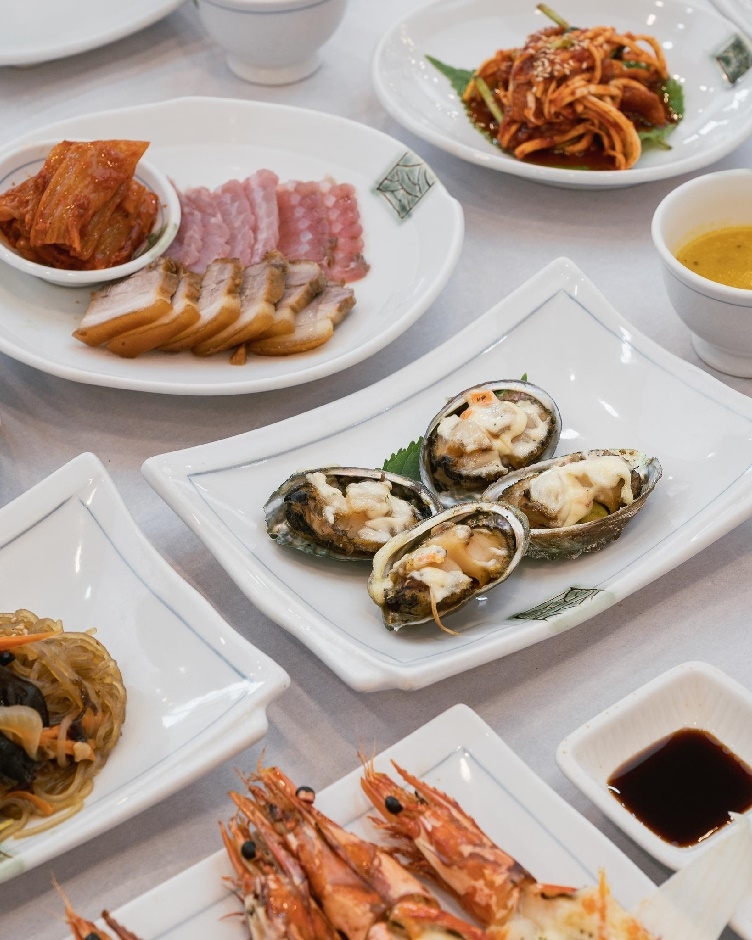
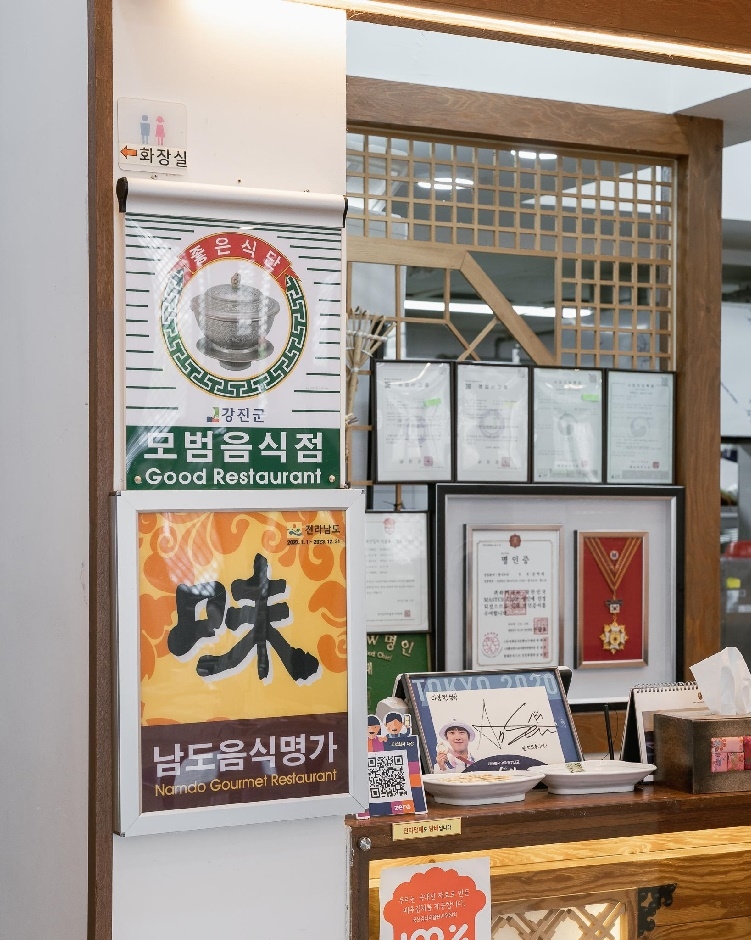
The Jeollanam-do Provincial Government has prepared
diverse certifying systems to publicize traditional Namdo foods.
As such, once a restaurant is recommended by a city and gun mayor and passes the evaluation of experts,
it is certified as a “Namdo Gourmet Restaurant.”
Such certification is practiced not only in Gangjin-gun but in all regions of Jeollanam-do,
so tourists to Jeollanam-do should note it.
Dagang Hanjeongsik is a Korean table d’hote restaurant certified as a Namdo Gourmet Restaurant in Gangjin-gun.
It has private rooms and halls with many seats to accommodate families and groups.About Restaurant:
Name: Dagang HanjeongsikAddress: 193, Jungang-ro, Gangjin-eup, Gangjin-gun, Jeollanam-do
Opening hours: 11:30–20:40 (closed on Mondays)
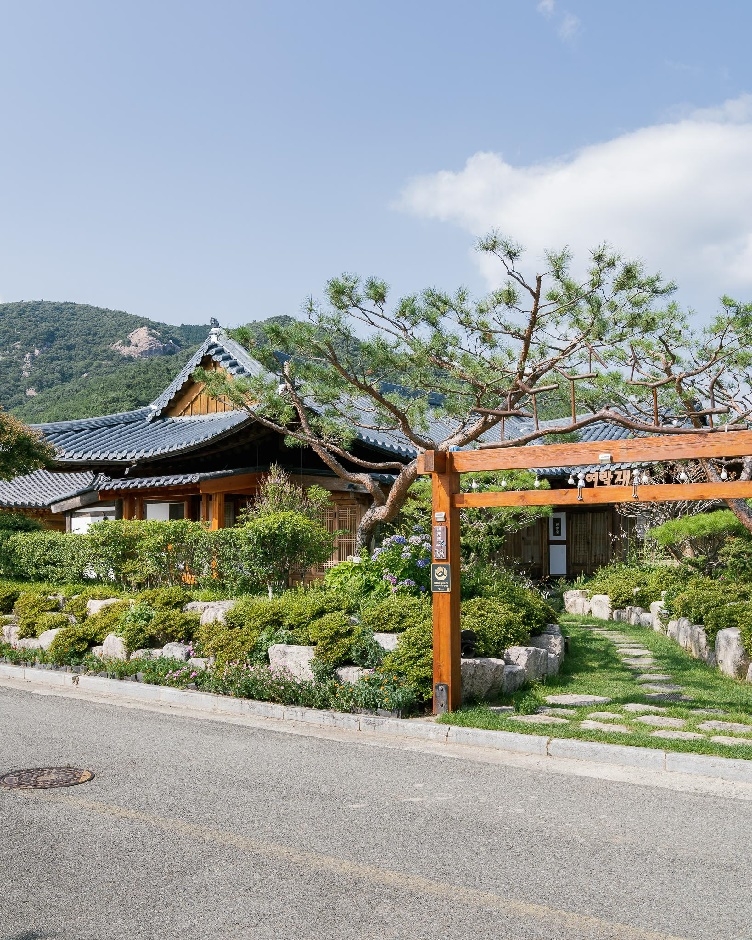
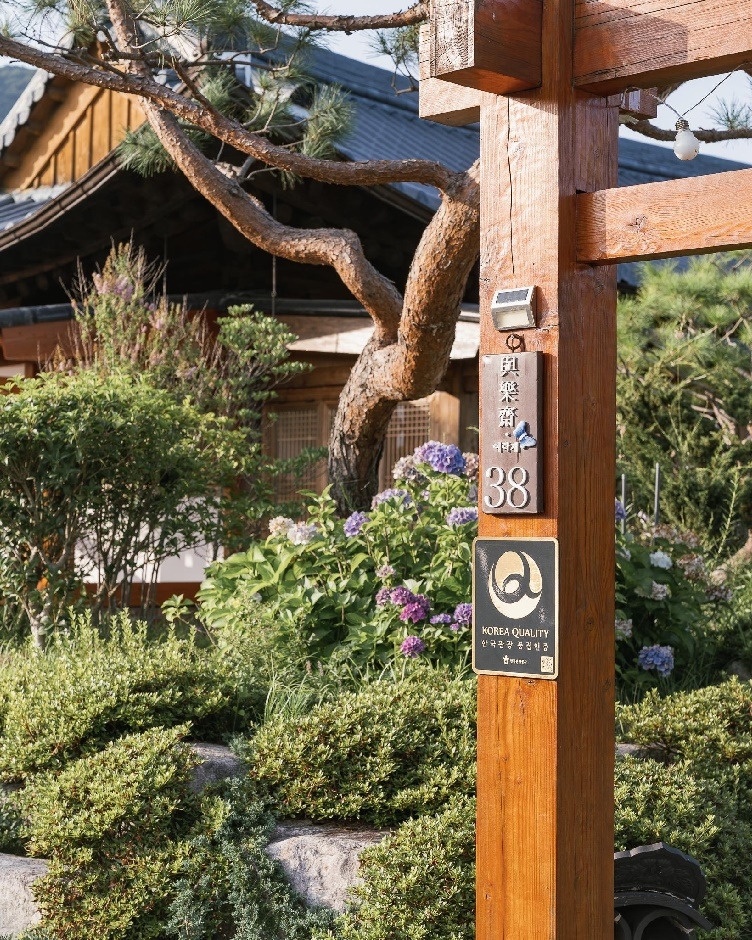
Gangjin-gun also supports diverse experiences
that can be enjoyed only in the countryside under the name of “FU-SO,”
meaning “Feeling-Up, Stress-Off.”
This program is also related to accommodation, an indispensable part of a trip.
It consists of not only bed and breadfast but also factors hard to enjoy in general accommodations,
like experiencing hanok (traditional Korean house) and local foods, put into a tour package.
I decided to stay at “Yeorakjae” in the Gangjin Dalbit Hanok Village.
The house with an outstanding,
beautiful garden is said to have been personally designed
and decorated by two couples who love hanok.About Accommodation
Name: Yeorakjae
Address: 38, Dalbithanok-gil, Seongjeon-myeon, Gangjin-gun, Jeollanam-do
Parking: Available
Capacity: Eight guests
Check-in: 16:00
Check-out: 11:00
Cannot cook inside the room
Room types
1) Full Moon Room (2–3 guests): KRW 150,000
2) Crescent Moon Room (2–3 guests): KRW 120,000
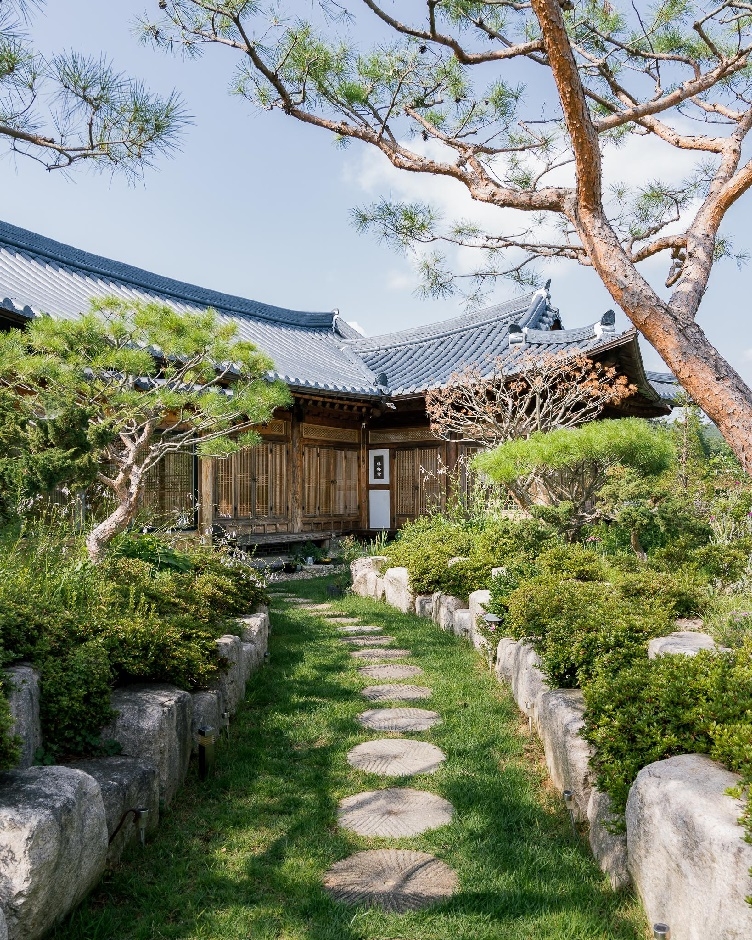
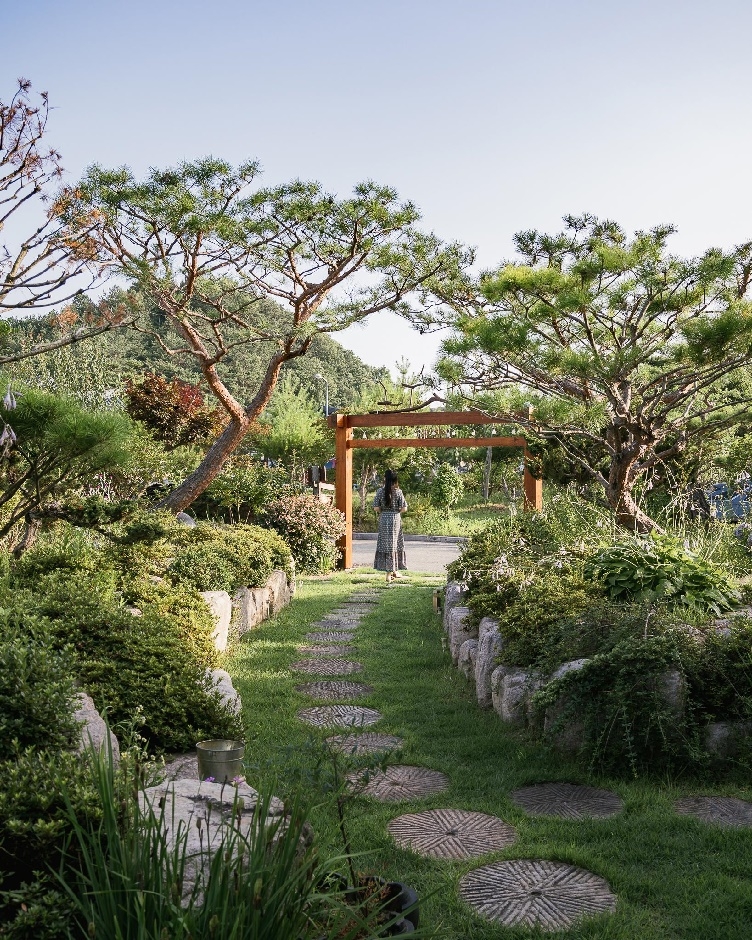
I can admit that the host truly loves hanok from the well-kept garden.
The pine trees growing toward the entrance
and the grass landscaping make the accommodation look elegant and comfortable.
I could imagine how wonderful it would be to rest seated under the eaves
with the wind blowing once it gets cooler.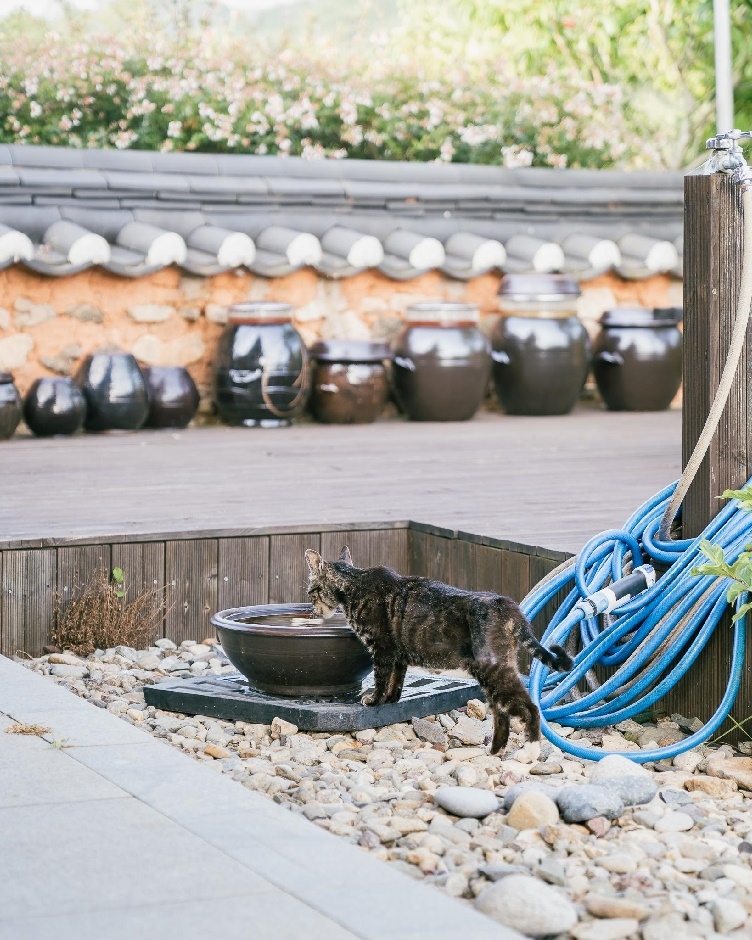
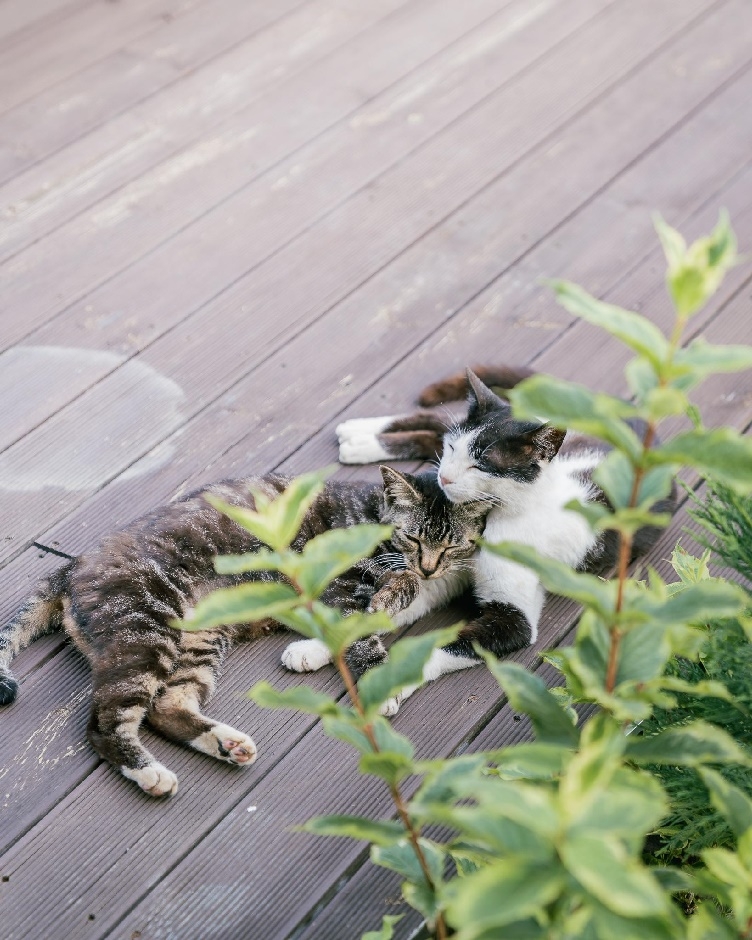
Looking at the cats that defined their territory in the garden also comforts the heart.
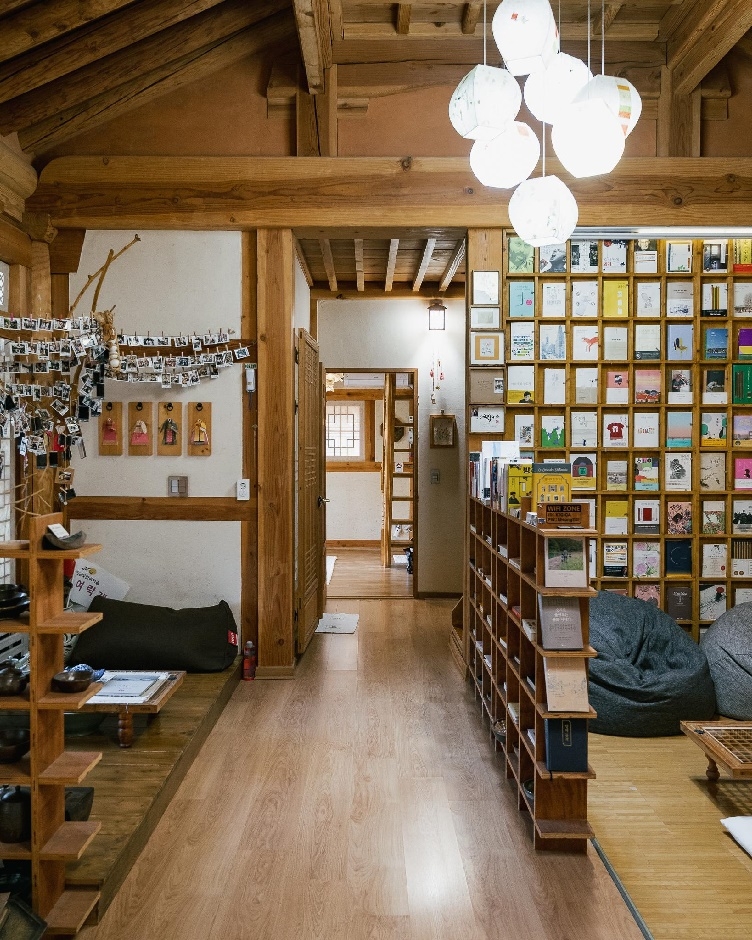

Yeorakjae has rooms on the left and right of the large living room in the middle.
Depending on the number of guests,
only some rooms may be used or the entire house rented to comfortably enjoy the entire hanok.
For two guests, I would recommend choosing the option that includes a living room (Full Moon Room)
if you want to leisurely stay as the living room is rather larger than expected.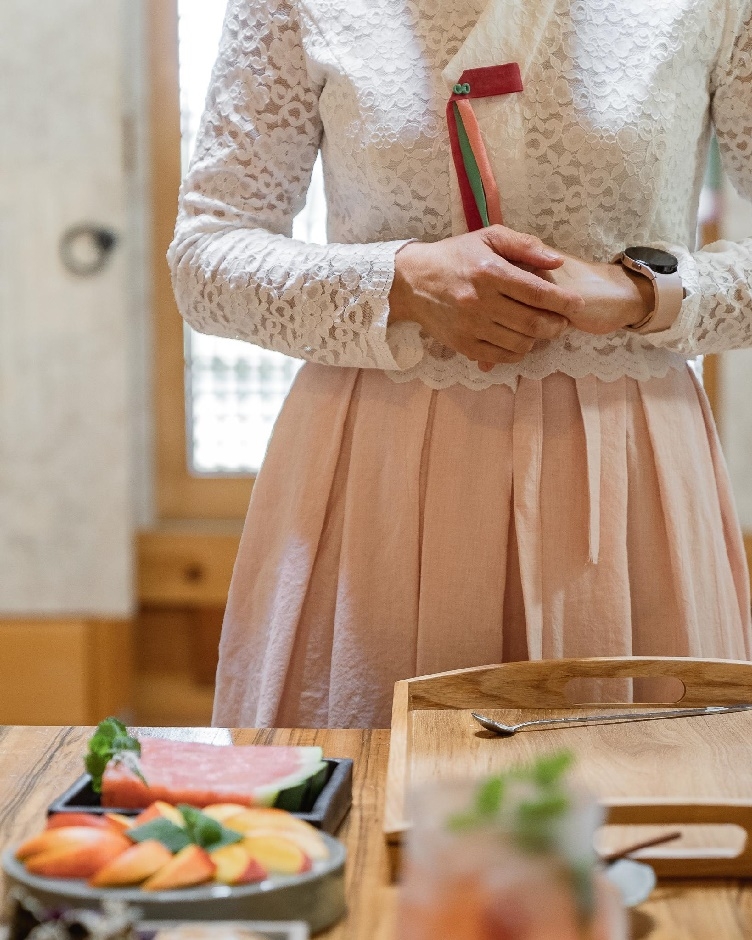
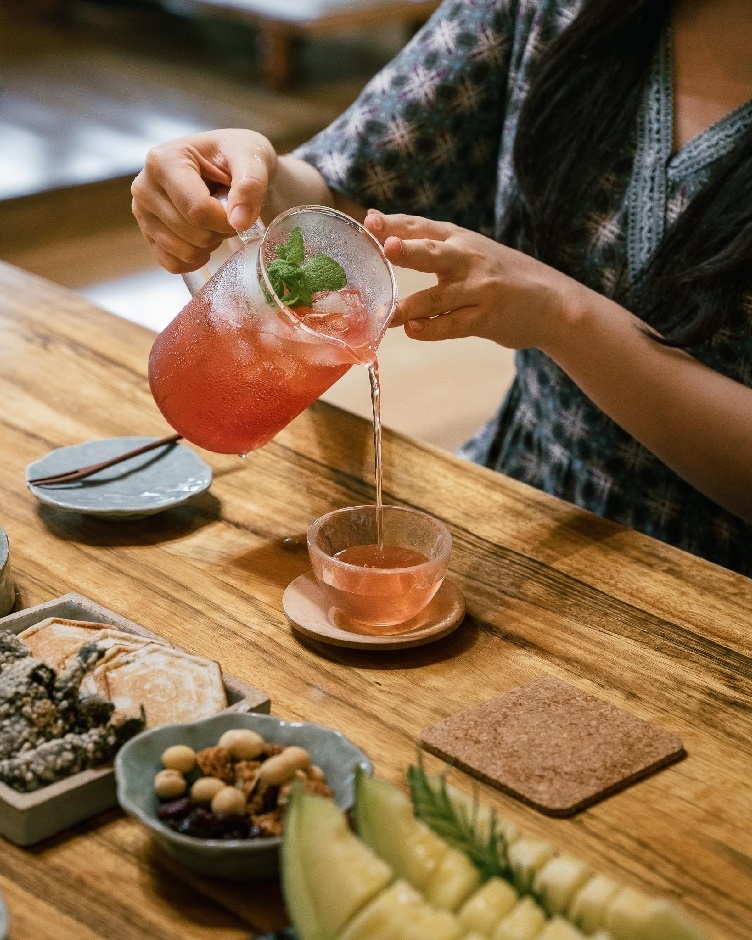
The welcome tea offered during check-in is the start of the FU-SO experiences to be enjoyed at Yeorakjae.
The host will briefly provide information about the accommodation, greet,
and tell stories about the hanok for a closer encounter than other hosts.
This does not mean that the host will join the teatime,
so guests do not have to feel burdened.
After a brief conversation, guests can enjoy the refreshments and rest.
* If checking in after 20:00, the welcome tea is not provided.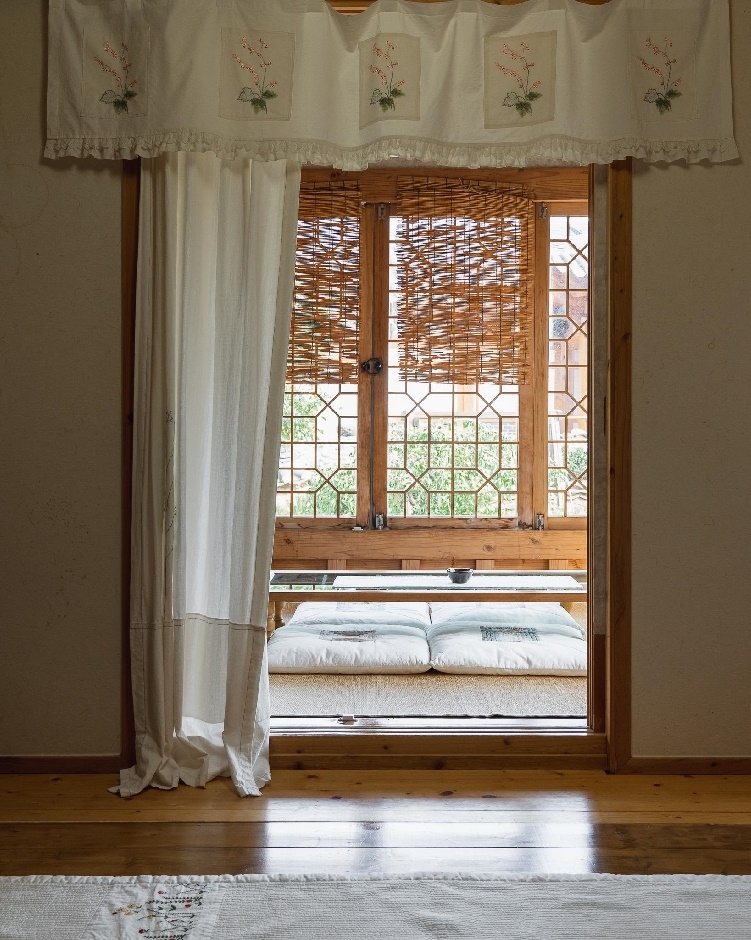

Each room on both sides of Yeorakjae has a raised floor space called “numaru,”
overlooking the garden outside.
This could be said as a photo zone and highlight of the accommodation.
I plan to set the selfie taken with numaru as the background as the profile photo of my messenger for some time.
In its corner are a refrigerator and several apparatus,
and you can open the window or door to let the wind blow in.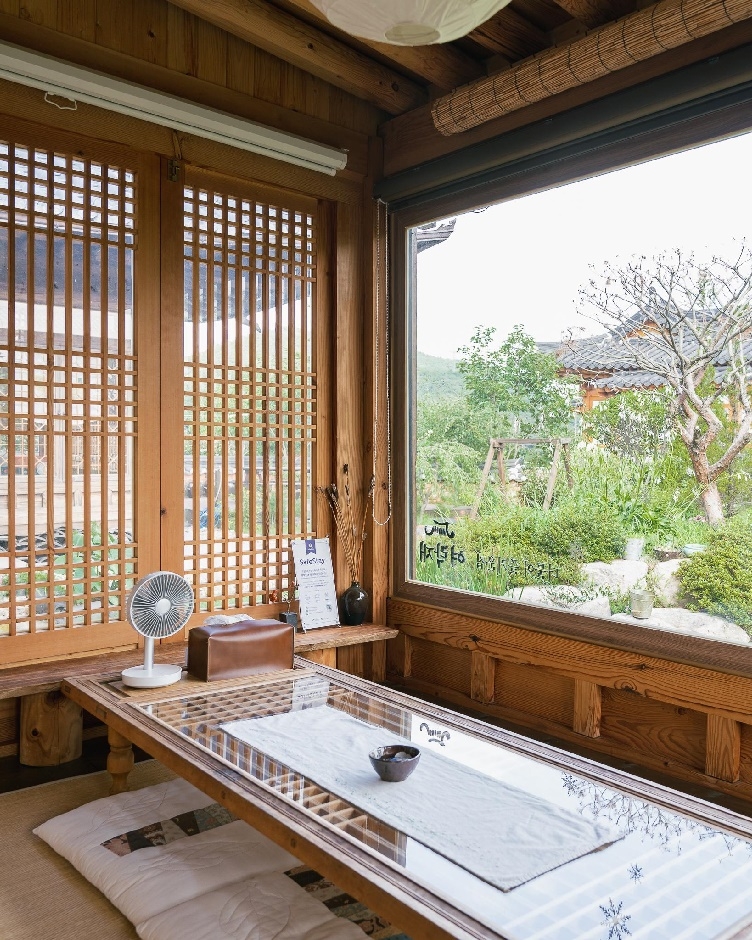

From the numaru on the other side (Crescent Moon Room),
you can enjoy a view of the pine trees without a window or lattice.
The scenery like a view with a large frame made me not stop taking photos.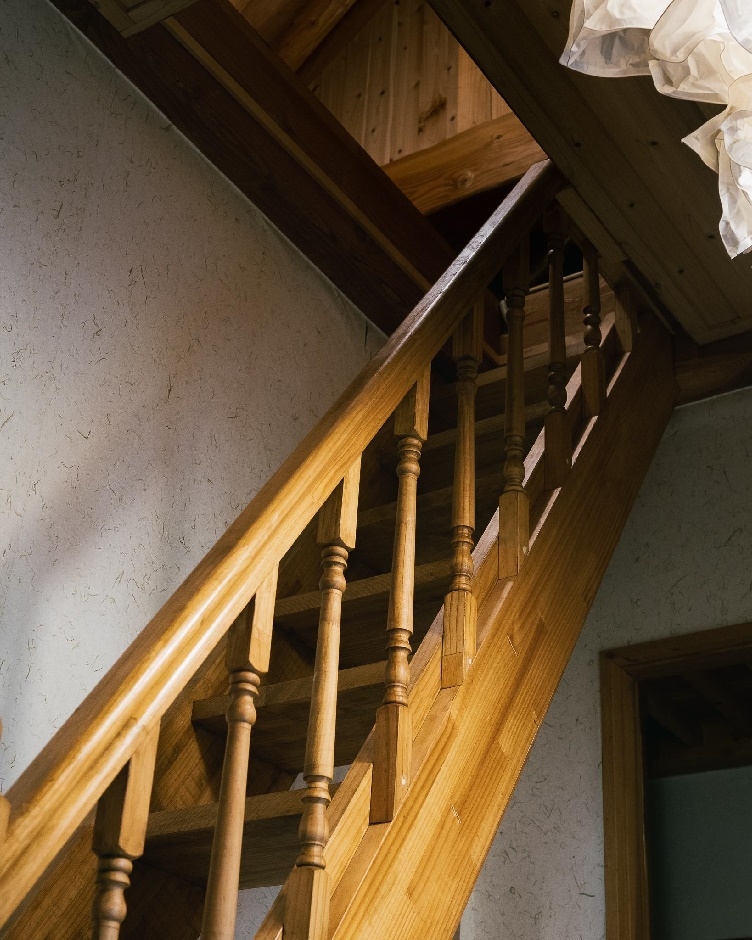
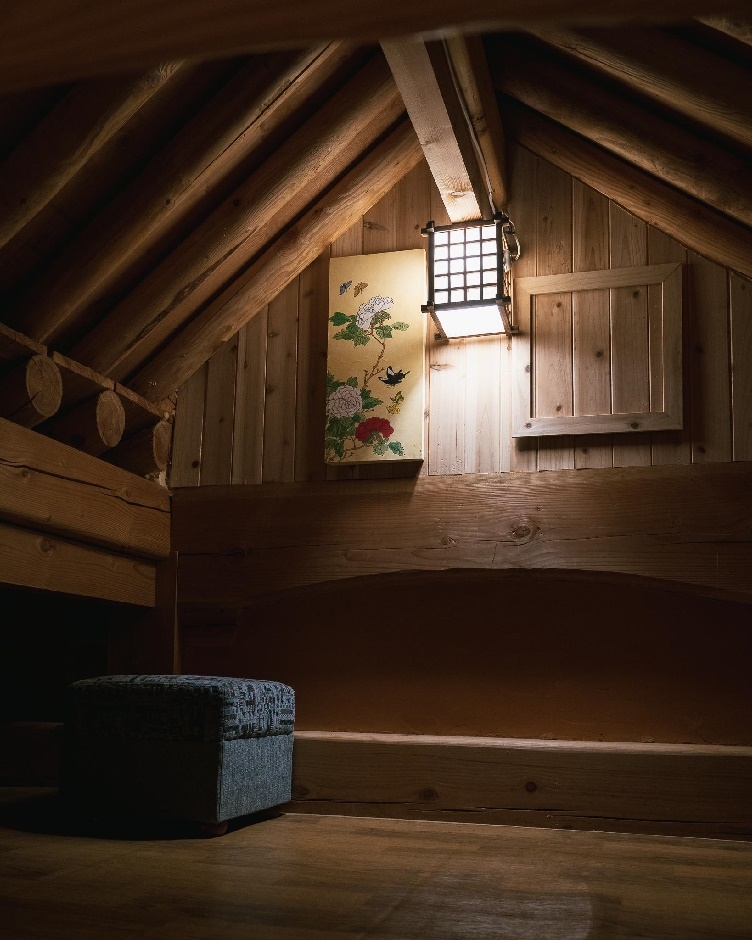
The Crescent Moon Room,
which does not have a living room, has a split-level attic.
Here, you can enjoy the feel of the attic that everyone must have dreamt of as a kid.
The floor height is relatively high to freely use the space.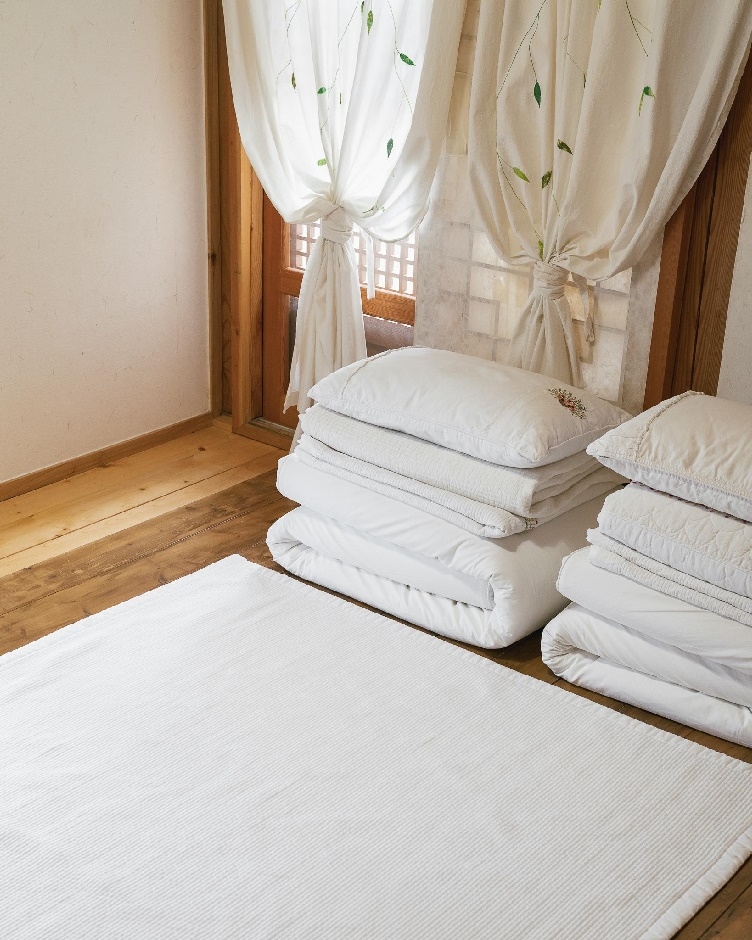
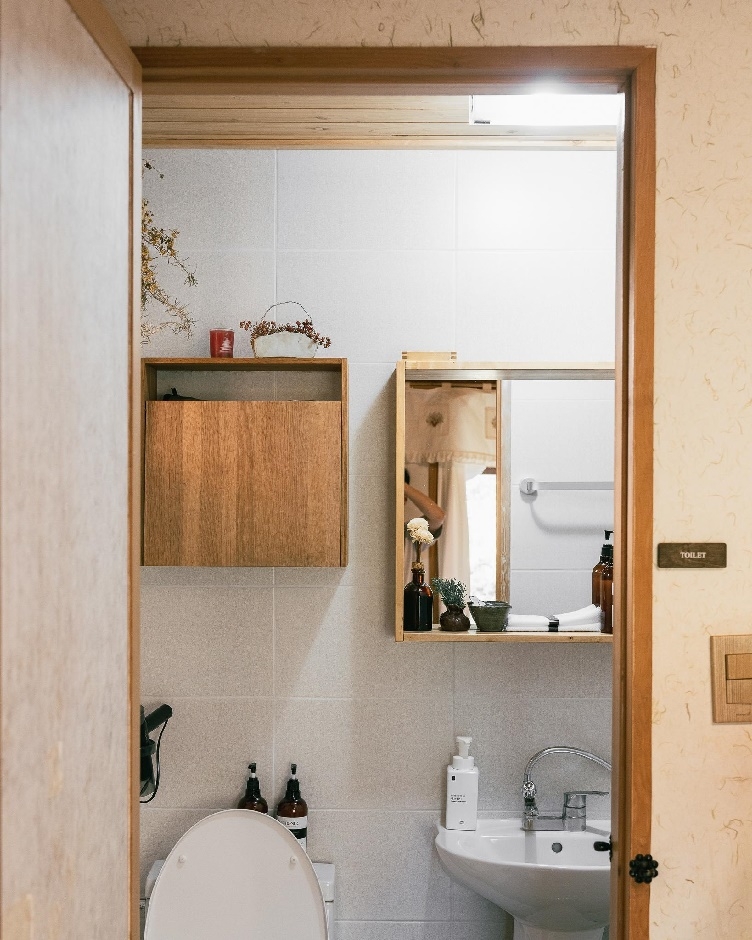
When using a hanok accommodation,
however, many people are worried about its cleanliness, bedding, conveniences,
etc. caused by its spatial limitation.
To my relief, there was nothing to concern me.
I could sleep comfortably on a separately prepared soft mattress and use the restroom
that was neatly designed like a modern toilet pleasantly.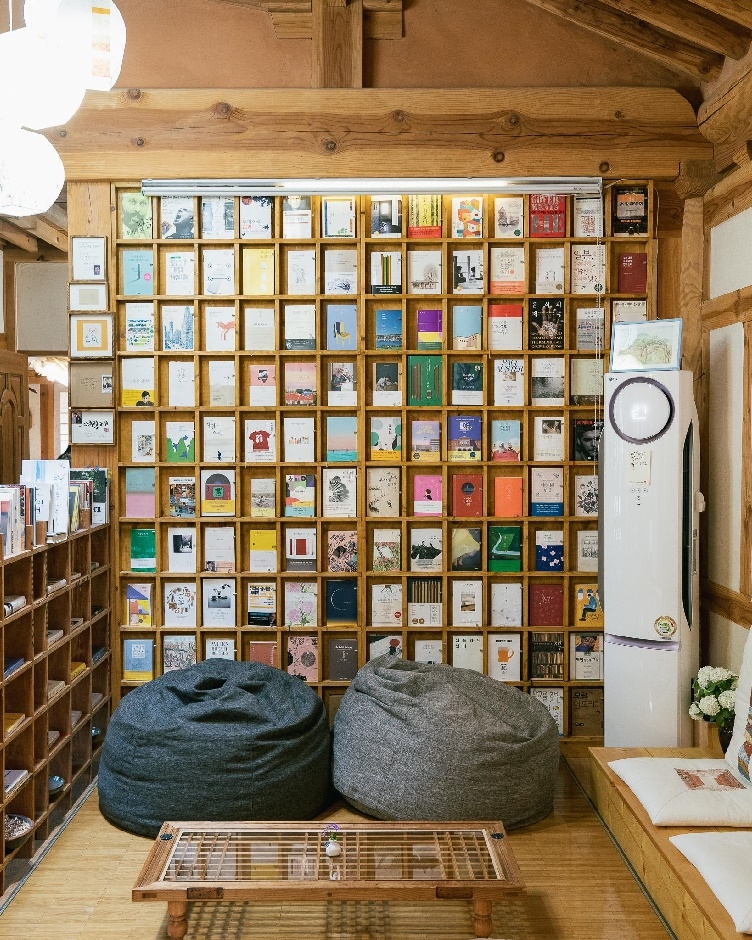
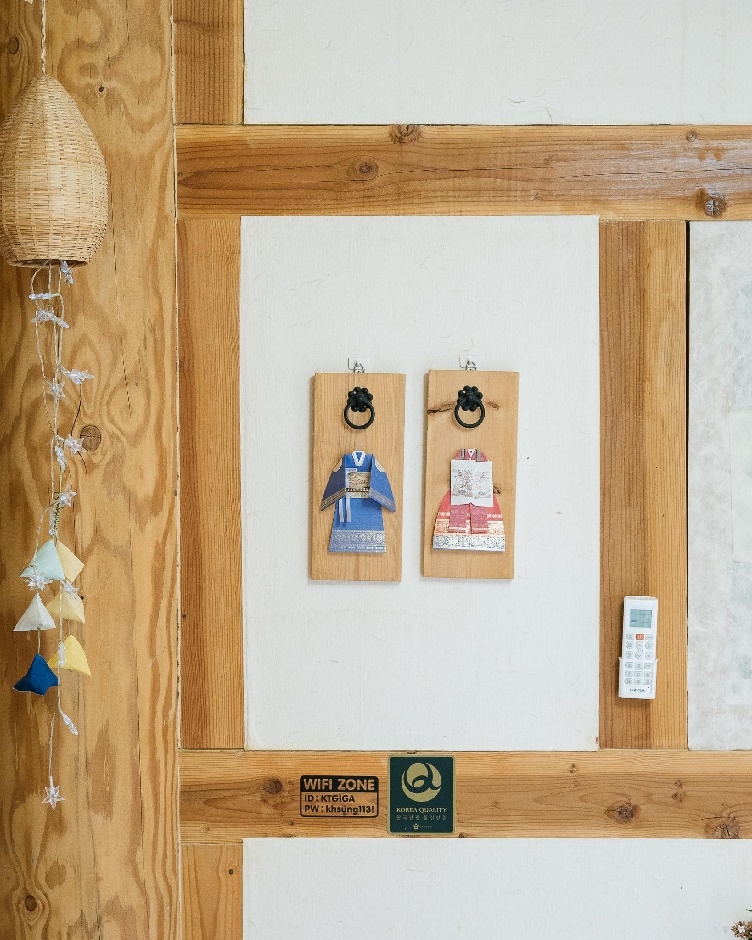
On top, it comes with Wi-Fi, a beam projector, a mini game,
and even convenient items that I did not expect, to keep guests entertained.
All these factors offered for the convenience of the guests were fully satisfying.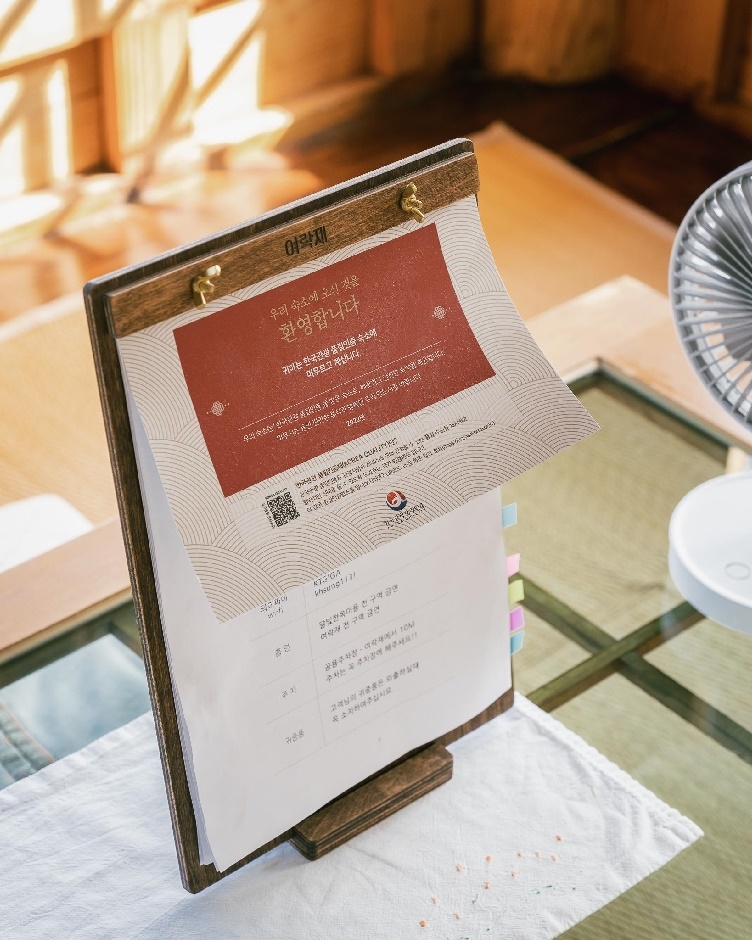
Maybe because such meticulous arrangements were recognized,
the Korea Quality marks proudly adhered in different corners of the accommodation.
The certificate is provided by the Korea Tourism Organization,
which sets quality standards for tourism facilities
and certifies the facilities that have passed the standards.
As such, it has public confidence.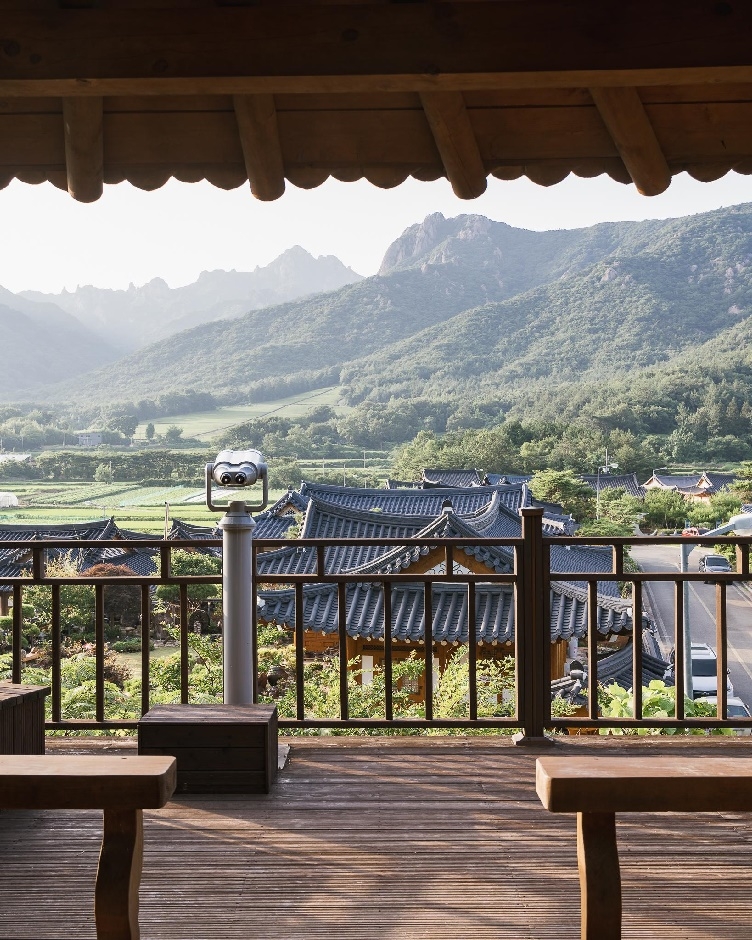
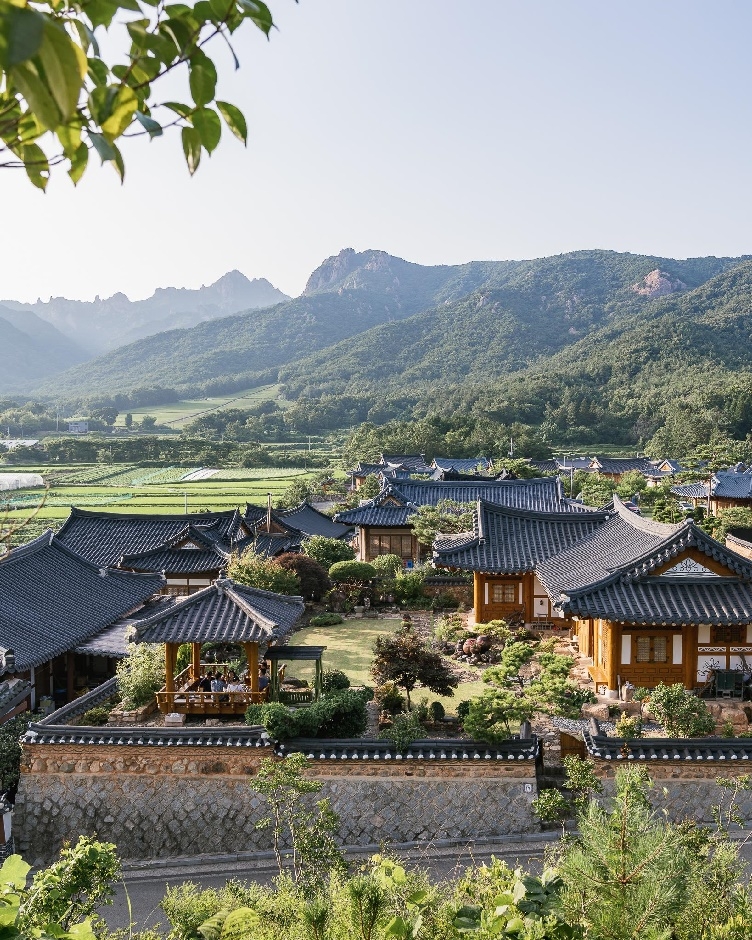
After fully unpacking,
I decided to look around some tourist sites the host recommended as it was still daylight.
The observatory nearby offers a view of Dalbit Hanok Village.
The village can be missed because it does not have many hanok,
but the scenery of the village mingled with Wolchulsan Mountain far away is awesome.
In particular, diagonally shining lights during the sunrise
or sunset enable you to properly enjoy the beauty of hanok.
I, thus, recommend going there in time for sunrise or sunset.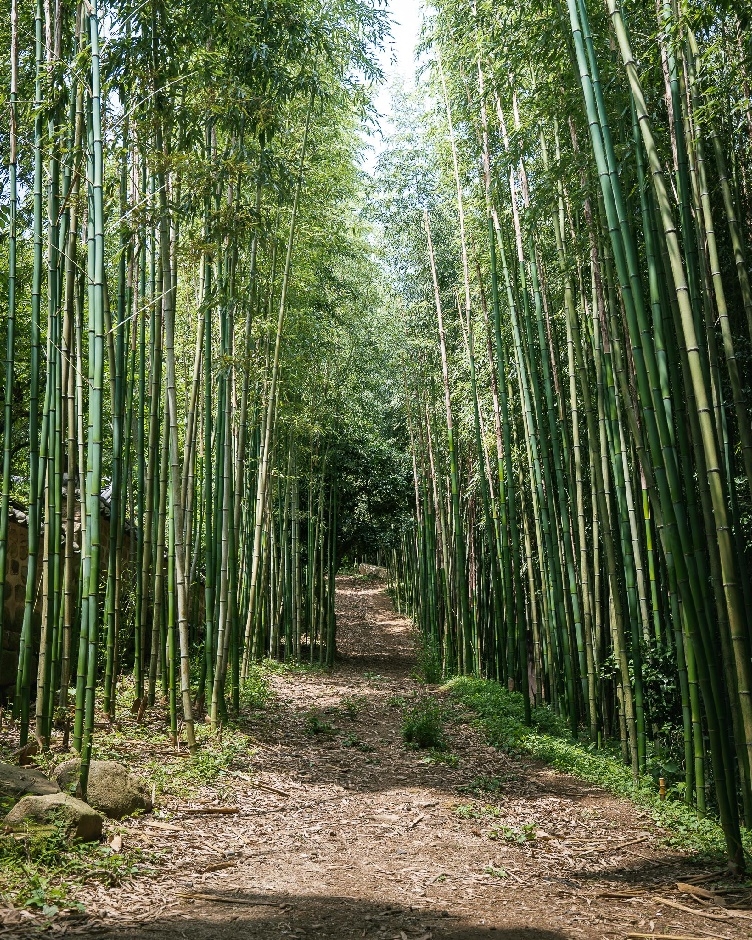
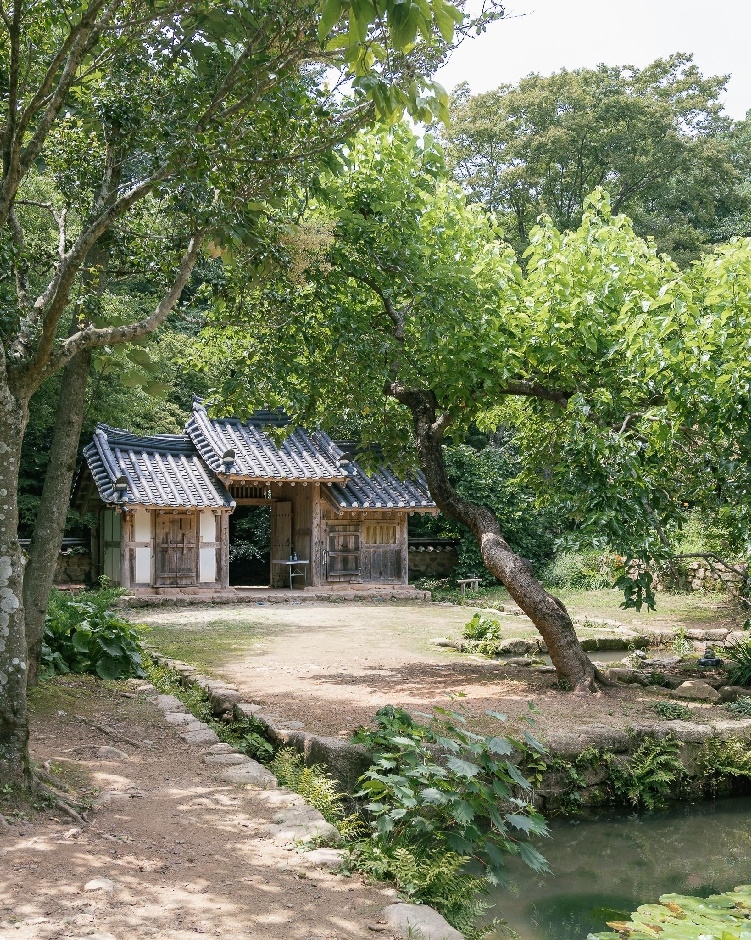
The Baegundong Garden located near the village is recorded as an attraction
that was enjoyed by the Joseon-era philosopher
and poet Jeong Yak-yong (pen name: Dasan) while in exile.
Here, you can have a glimpse of the secluded life culture of classical scholars
in the middle of the Joseon Dynasty.
It is not yet widely known as a tourist site
but expected to be visited by many tourists as it has been selected this year as a
“small but powerful tourist attraction with great potential.”
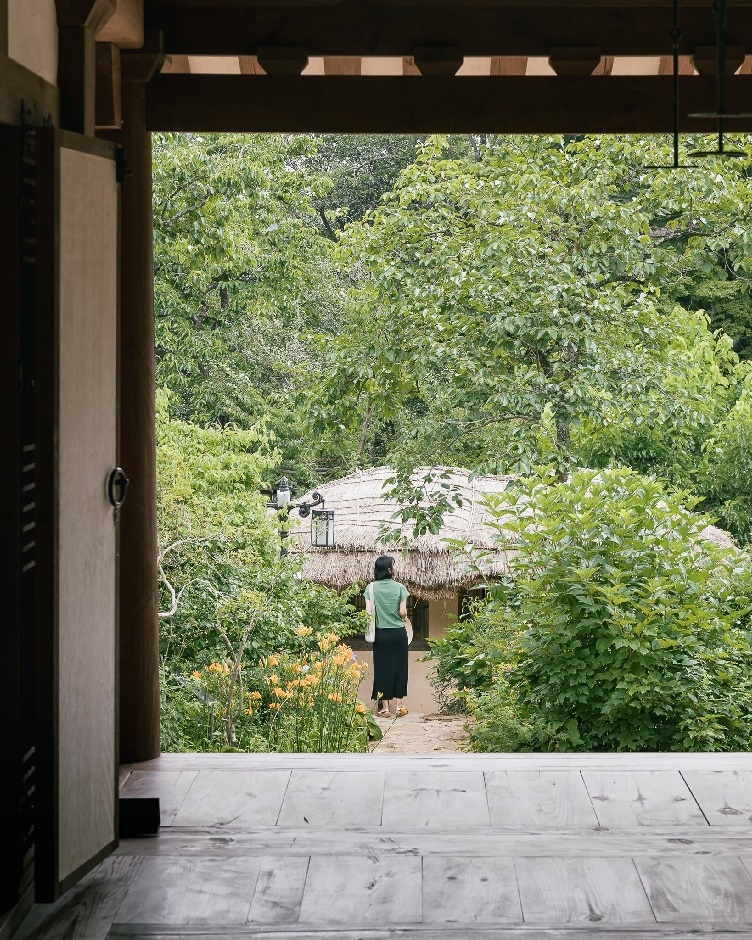
Located on the southern valley of Wolchulsan Mountain,
it is cool even in mid-day and feels cozy.
It is now green, but it probably offers different sceneries during other seasons,
so I decided to visit it again another day.
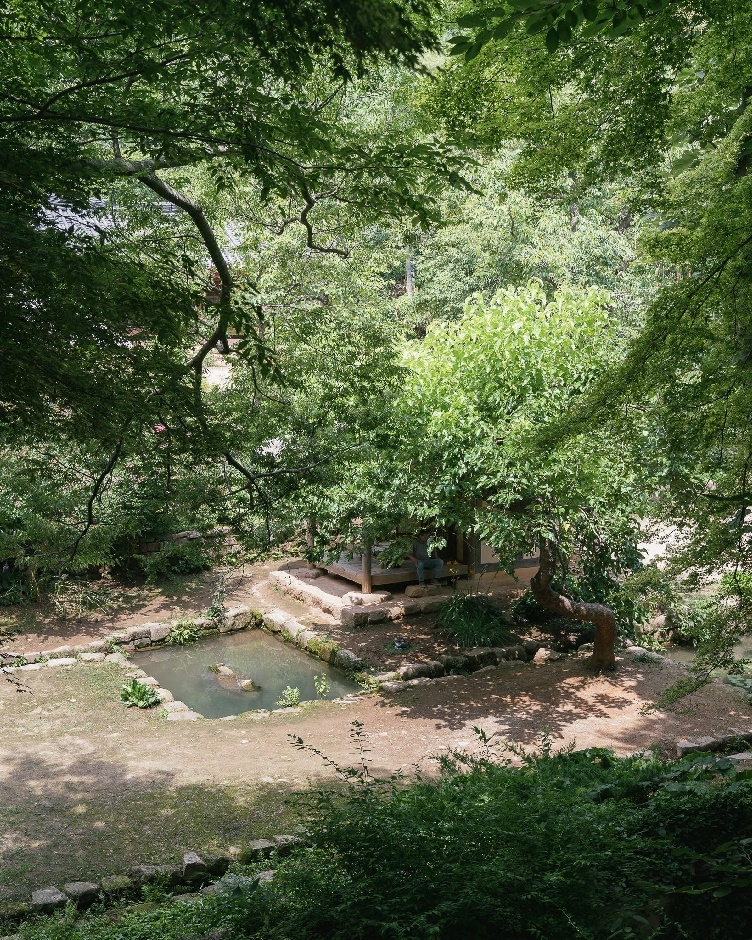

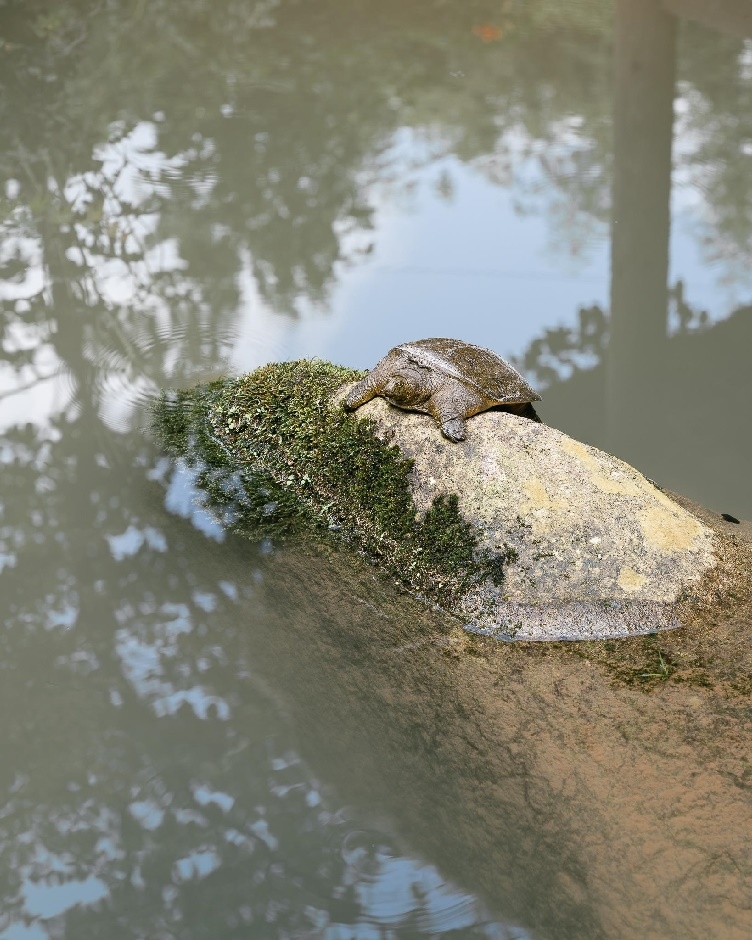
The Baegundong Garden has the 12 Sights designated as worth enjoying,
including sceneries inside and nearby.
The 12 Sights originate from the poem on the twelve sceneries
that Jeong Yak-yong wrote while staying here one day.
Thus, tourists can enjoy the fun of discovering each scenery like a treasure hunt.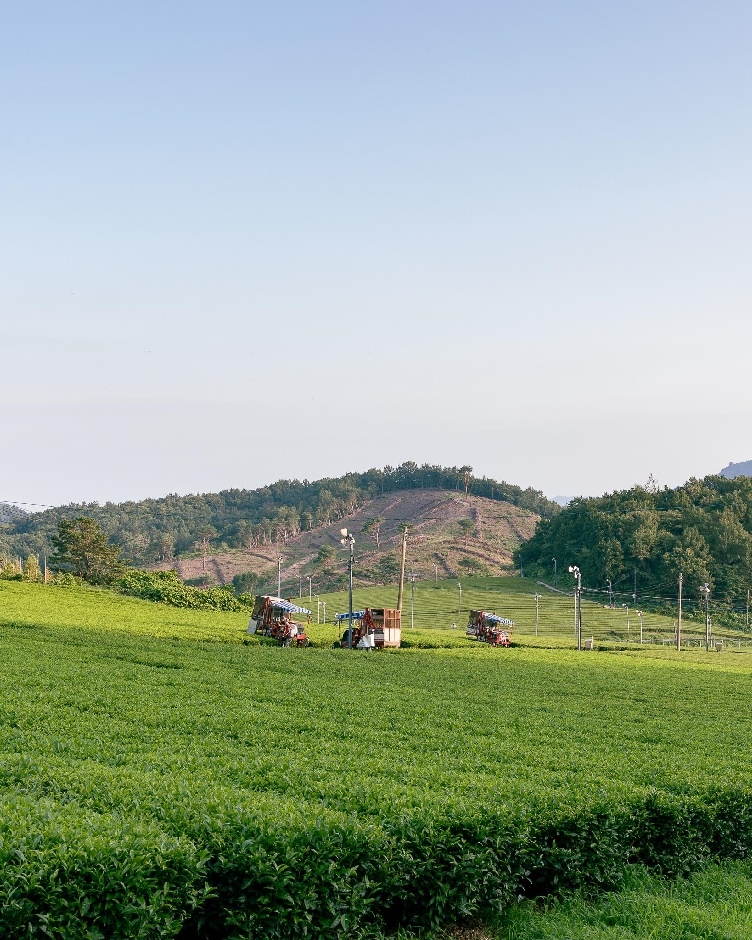
If you have time to spare, you can visit the Gangjin Dawon (Tea Plantation),
which is connected to the garden. As a tea plantation managed by Amorepacific,
Korea’s largest tea brand,
it boasts of an area as large as the plantations in Jeju Island and Boseong.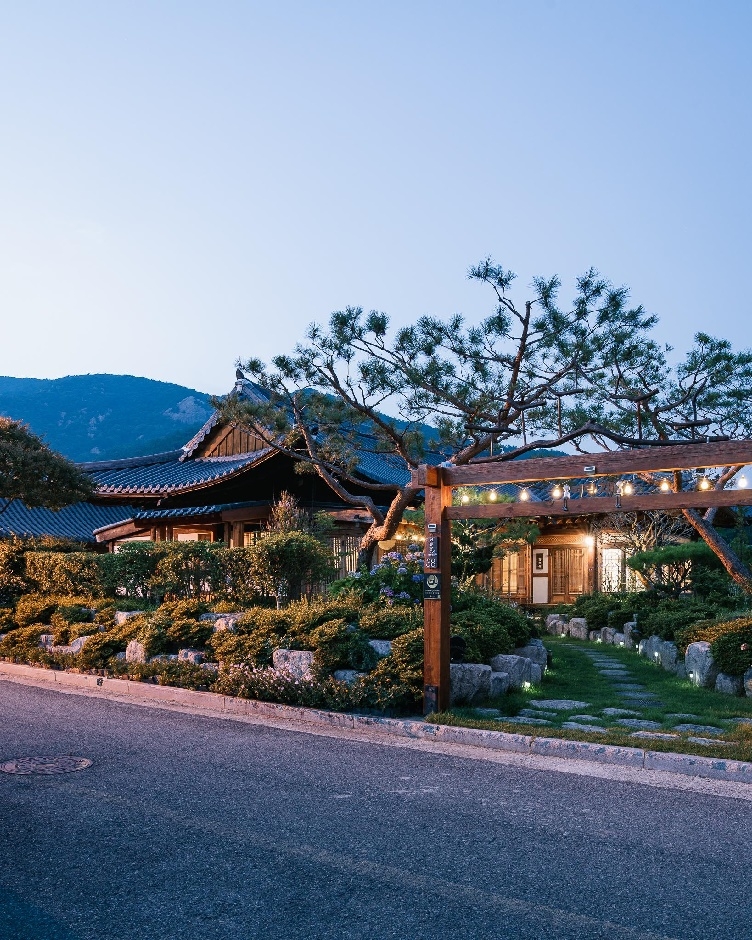
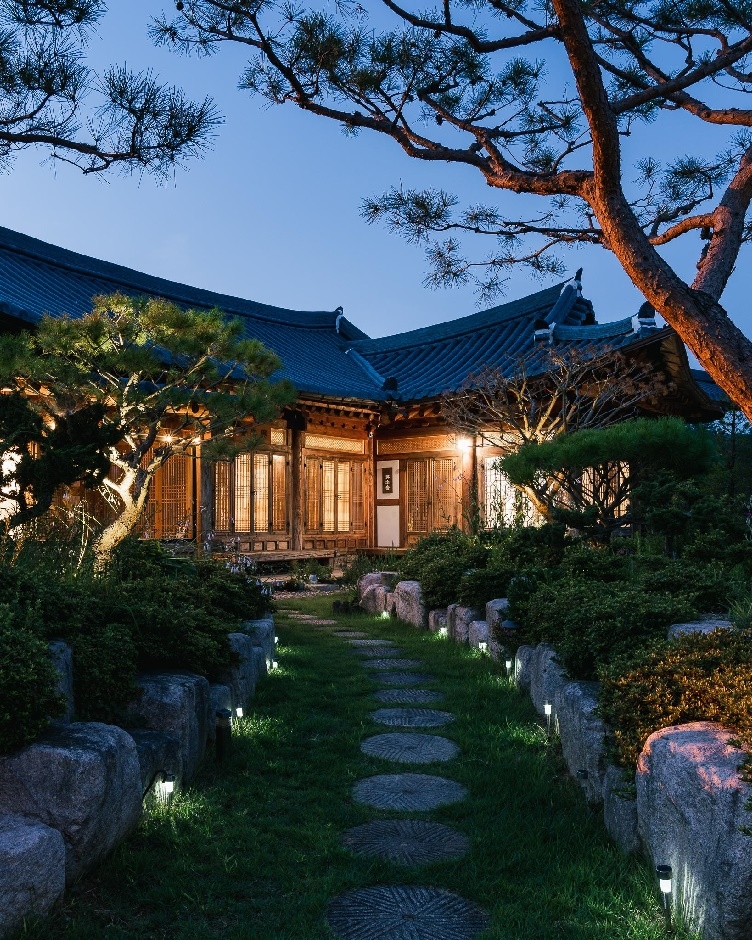
As I returned to Yeorakjae around sunset,
the lights shining in the darkness made it look somewhat different from its sight in daylight.
It exuded a mysterious aura that is difficult to expect from a hanok
and drew the attention of passing tourists.
As passersby commented, “This is the prettiest,” I felt somewhat proud.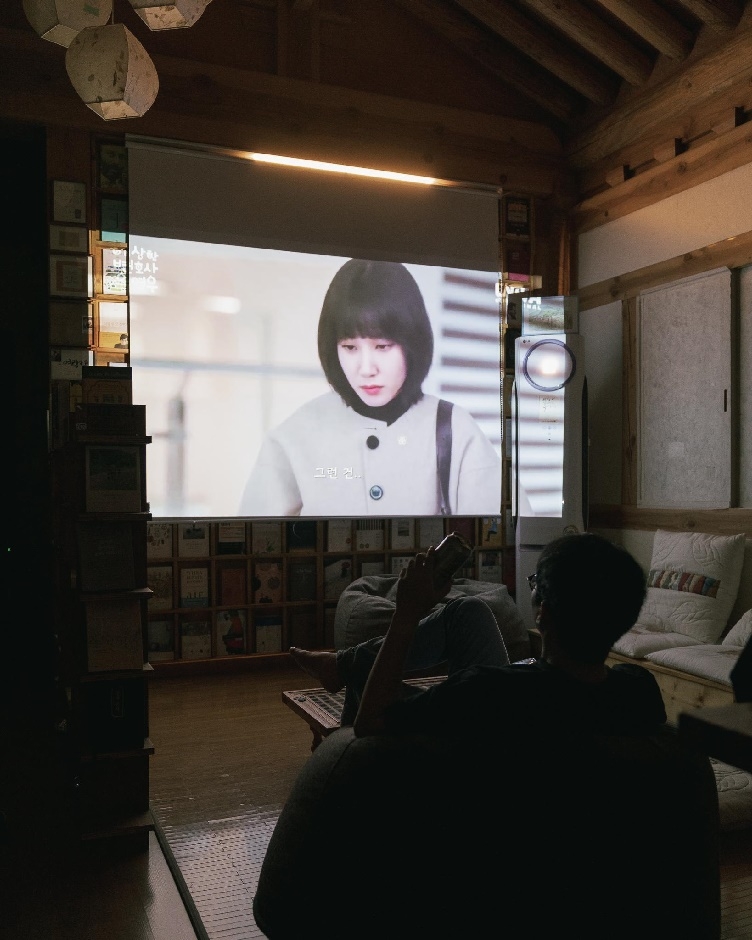
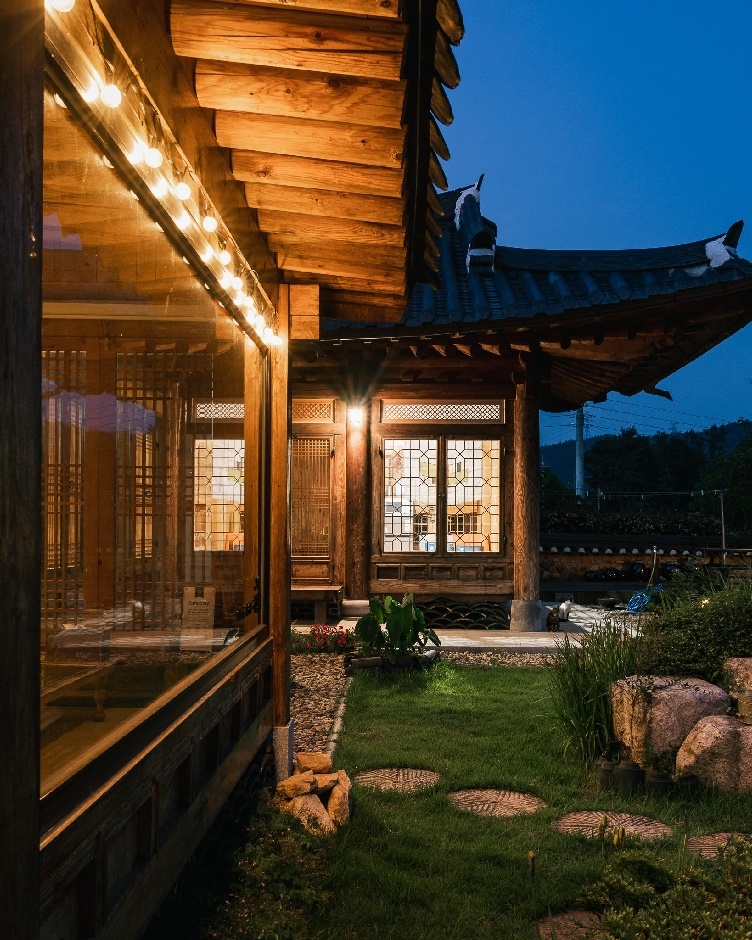
Thus, my happy touring day ended with a beam projector and a can of beer.
The day at Yeorakje also thus ended.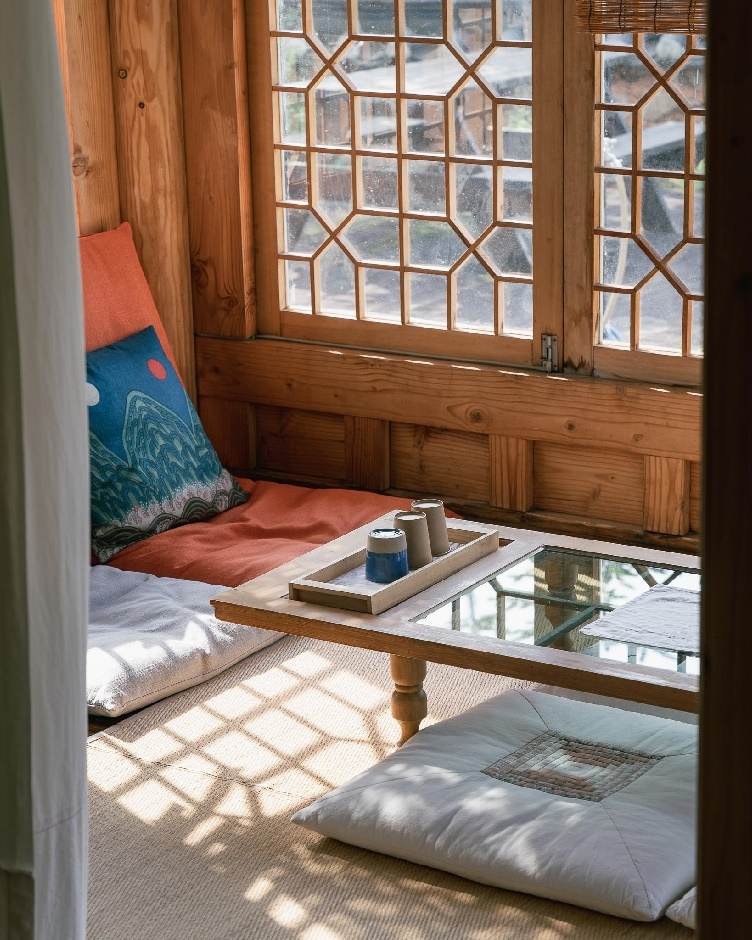
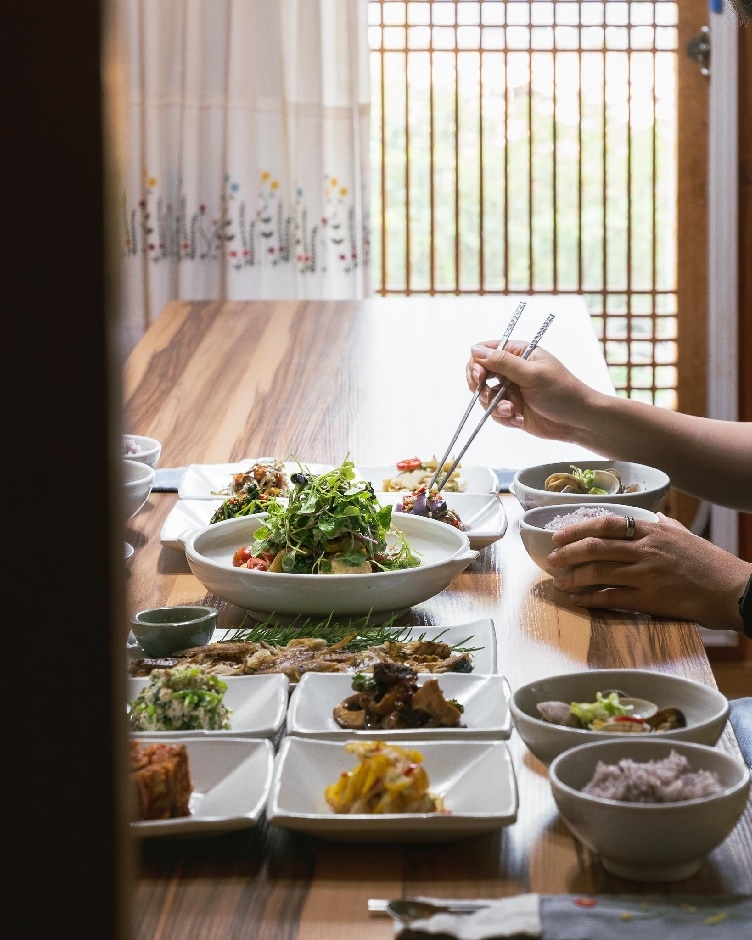
The morning at Yeorakje made numaru look pretty indeed.
The shadow cast by the window in front of me as soon as I opened my eyes was just beautiful.
The breakfast prepared in time was filled with local ingredients from Namdo,
including the vegetables personally grown in the village vegetable garden.
The salad dressing was also personally made
and the grilled fish had the bones removed for its comfortable consumption.
As such, I was moved once again by the host’s meticulous care.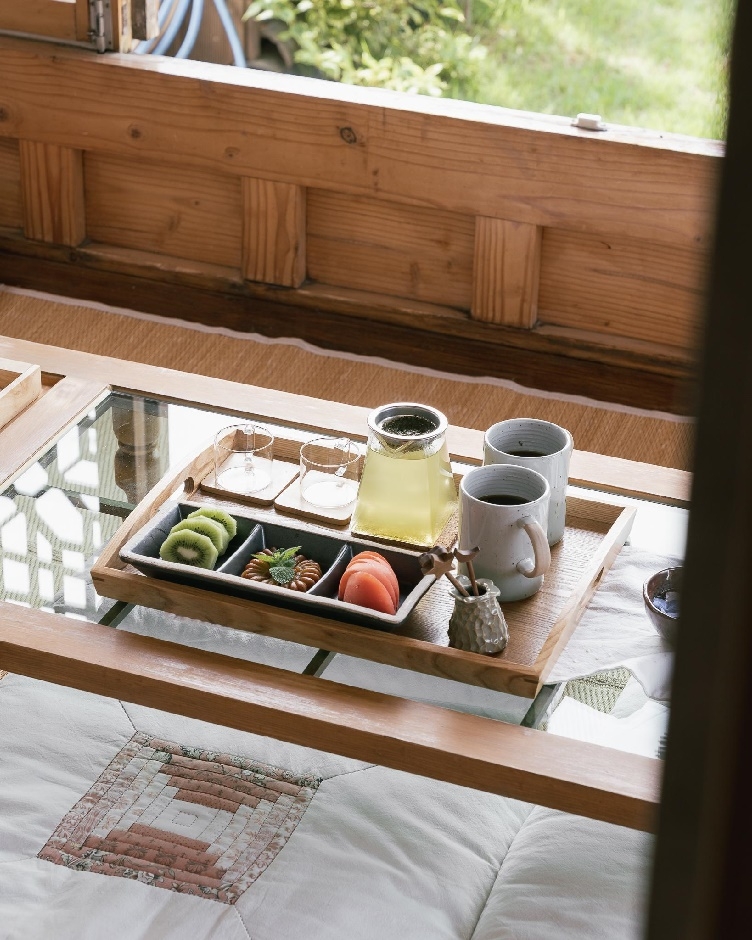
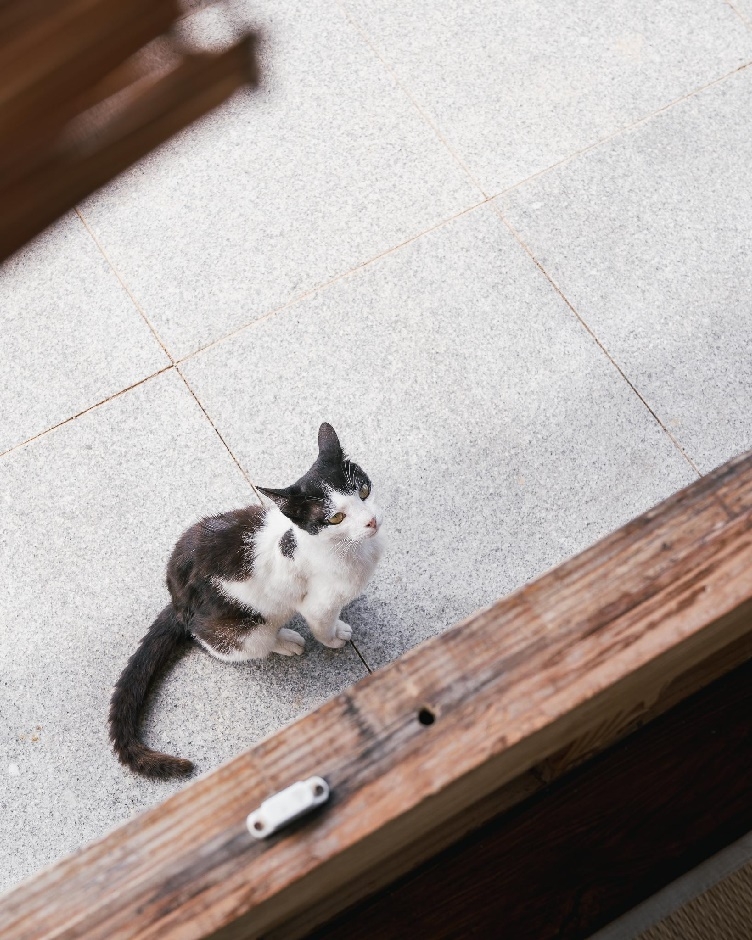
Then, teatime followed, during which I enjoyed the last refreshments on numaru,
the essence of Yeorakjae, with the window wide open.
A cup of tea leisurely enjoyed with a painting-like scenery was something
that I couldn’t possibly dream of in a city.
As the words “FU-SO Experience” means,
the memories built here while leisurely releasing the stress
that had accumulated during the busy beginning of the month lingered
for long even after I returned to the city.
This is Yeorakjae of Gangjin-gun, Jeollanam-do, with a beautiful garden and neat hanok,
where I enjoyed a sensual night and built unforgettable memories.




